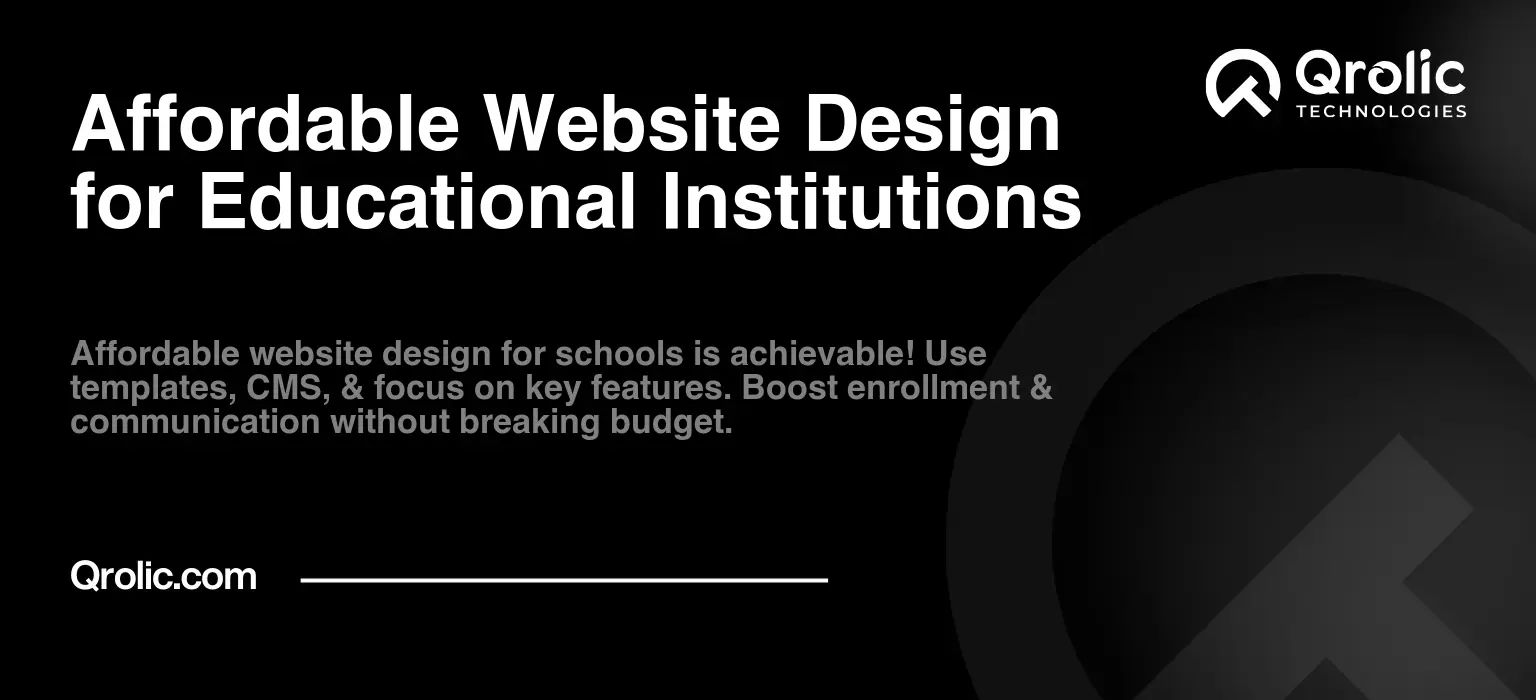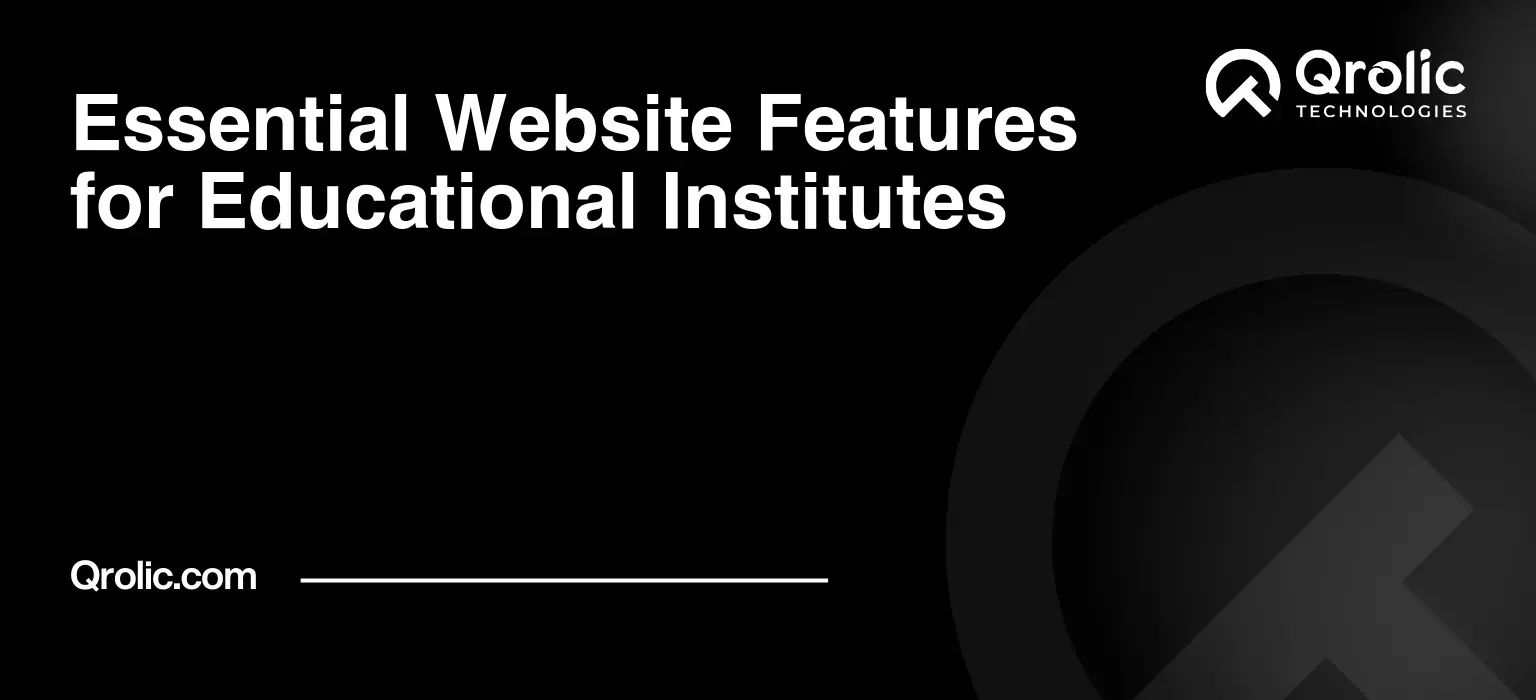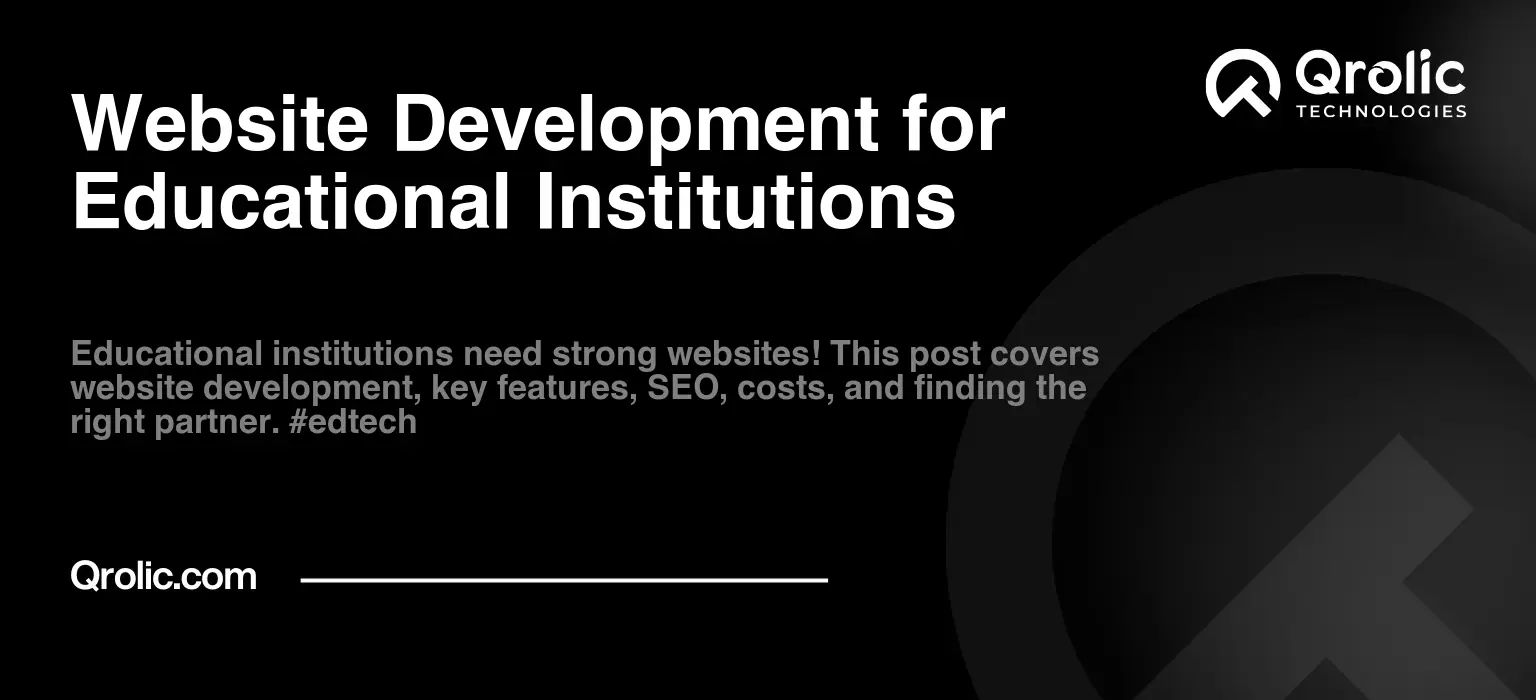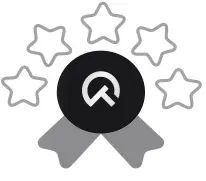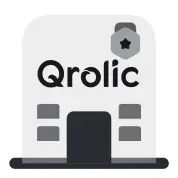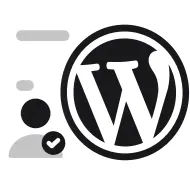Navigating the digital world can feel overwhelming, especially for educational institutions striving to connect with students, parents, and the wider community. A professional website is no longer a luxury; it’s a vital communication hub, a digital face, and a powerful recruitment tool. However, budget constraints are a reality for many schools, colleges, and training centers. The good news? Affordable website design is entirely achievable without sacrificing quality or impact. Let’s explore how educational institutions can create a compelling online presence without breaking the bank.
Quick Summary:
- Build a vital online presence for schools.
- Use templates, CMS, and simple designs.
- Prioritize essential features and content.
- Plan well, test, and maintain your site.
Table of Contents
- Why a Website is Crucial for Educational Institutions
- Enhanced Communication and Transparency
- Boosting Enrollment and Student Recruitment
- Building Brand Credibility and Reputation
- Supporting Students and Parents
- Understanding the Costs of Website Design for Educational Institutions
- What Makes Website Design Affordable for Educational Institutions?
- Leveraging Website Templates
- Using a Content Management System (CMS)
- Emphasizing Simplicity and Clarity
- Content Creation Strategies for a Budget
- Focusing on Essential Features
- DIY vs. Hiring a Professional
- Step-by-Step Guide to Affordable Website Design for Educational Institutions
- Qrolic Technologies: Your Partner in Affordable Website Design
- Conclusion
Why a Website is Crucial for Educational Institutions
Before diving into affordability, let’s reiterate why a website is indispensable for any educational institution:
Enhanced Communication and Transparency
A website acts as a central information portal, keeping everyone in the loop. You can easily share:
- School calendars and events: Inform parents about upcoming holidays, parent-teacher meetings, and school events.
- Admission processes and deadlines: Make the application process clear and accessible for prospective students.
- Curriculum information: Offer detailed descriptions of courses, subjects, and teaching methodologies.
- Important announcements and policies: Keep the community updated with official news and institutional guidelines.
- Staff directories: Make it easy for students and parents to connect with the right personnel.
Boosting Enrollment and Student Recruitment
In today’s world, most prospective students start their college search online. An engaging and informative website is a crucial recruitment tool, showcasing:
- Unique selling points: Highlight what makes your institution special – its culture, faculty, programs, and facilities.
- Student testimonials and success stories: Build credibility and inspire confidence in your educational offerings.
- Virtual tours: Allow prospective students to explore the campus remotely, creating a sense of familiarity.
- Easy application portals: Streamline the admissions process and encourage applications.
Building Brand Credibility and Reputation
A professional website lends legitimacy to your institution and builds trust with the community. It projects:
- Professionalism and competence: A well-designed website shows that you take your institution’s image seriously.
- Modernity and forward-thinking: It signals that your institution is relevant and keeping pace with technological advancements.
- Commitment to quality: A high-quality website reflects the commitment to excellence you offer in education.
Supporting Students and Parents
Websites aren’t just for attracting new students. They are a valuable resource for current students and parents by providing:
- Access to grades and assignments: Give students and parents convenient access to academic information.
- Online learning resources: Facilitate online classes, homework submissions, and access to supplementary learning materials.
- Student handbooks and policies: Keep important documentation easily accessible.
- Frequently asked questions (FAQs): Provide immediate answers to common queries, reducing the workload on administrative staff.
Understanding the Costs of Website Design for Educational Institutions
Website design costs can vary significantly based on several factors:
- Complexity: Simple brochure-style websites are less expensive than complex portals with dynamic content, user accounts, and databases.
- Customization: Highly customized websites that require bespoke design and development are more expensive than those using pre-built templates.
- Features and Functionality: The number of features you need – from contact forms to payment gateways – impacts the cost.
- Content Creation: Professional copywriting and photography can add to the overall expenses.
- Ongoing Maintenance: Website maintenance, security updates, and hosting costs should be considered.
What Makes Website Design Affordable for Educational Institutions?
Affordable doesn’t mean cheap. It means finding cost-effective solutions without compromising on quality. Here are key strategies to achieve that:
Leveraging Website Templates
Website templates are pre-designed layouts that can be customized with your content, branding, and colors. They are an affordable alternative to custom designs. The advantages include:
- Lower cost: Significantly cheaper than custom-built websites.
- Faster turnaround: Websites can be launched quickly.
- Ease of use: Many templates are designed for easy editing, even for users without coding experience.
- Professional look: High-quality templates are available that still look modern and polished.
Where to find good templates:
- wordpress Themes: WordPress offers a vast library of both free and premium themes.
- Squarespace Templates: Squarespace is known for its beautiful, modern designs.
- Wix Templates: Wix offers a wide range of templates that are easy to customize.
- ThemeForest: A marketplace for premium themes across various platforms.
Pro Tip: When selecting a template, prioritize responsiveness (ensuring the website looks good on all devices), ease of use, and the availability of necessary features.
Using a Content Management System (CMS)
A CMS allows you to easily manage and update your website content without needing coding knowledge. Popular CMS options include:
- WordPress: The most popular CMS, known for its flexibility, extensive plugin ecosystem, and user-friendly interface.
- Joomla: A more technically oriented CMS, suitable for complex websites.
- Drupal: Another powerful CMS favored by organizations with complex content management needs.
Why a CMS is Affordable:
- Easy to update content: You don’t need to hire developers for every minor change.
- Cost-effective content management: Saves significant costs by empowering non-technical staff to manage website updates.
- Extensible functionality: Plugins and extensions allow you to add features as your needs evolve.
Emphasizing Simplicity and Clarity
A website doesn’t need to be overly complex to be effective. Focus on:
- Clear Navigation: Ensure users can easily find the information they are looking for.
- Simple Layouts: Avoid cluttered layouts. Use white space effectively.
- Concise Content: Use clear and straightforward language. Avoid jargon.
- Mobile-First Design: Prioritize mobile usability as most users browse on their smartphones.
Why Simplicity is Affordable:
- Reduces development time: Less complex designs mean less time spent in development.
- Easier to maintain: Simple websites are easier to update and manage.
- Improved user experience: Clear, uncluttered websites are more user-friendly and keep users engaged.
Content Creation Strategies for a Budget
Quality content is crucial but can be expensive. Here are tips for affordable content creation:
- In-House Content: Encourage teachers, staff, and students to contribute content, such as blog posts, student spotlights, and testimonials.
- Re-Purpose Content: Reuse content across different channels – turn a blog post into an infographic or a short video.
- Free Stock Photography: Utilize free stock photo websites like Unsplash, Pexels, and Pixabay.
- DIY Videos: Use smartphones and simple editing software to create short promotional videos.
Why Smart Content Creation Saves Money:
- Reduces reliance on expensive freelancers: In-house resources can produce great content.
- Maximizes content value: Reusing content increases its impact and reach.
- Minimizes costs: Free resources are available for visuals and some editing tools.
Focusing on Essential Features
Prioritize the essential features your website needs rather than adding bells and whistles. Key features include:
- Homepage: A welcoming introduction to your institution.
- About Us: Information about your mission, vision, and history.
- Academic Programs: Details about your courses and subjects.
- Admissions: Information on the application process, fees, and deadlines.
- Contact Information: Easily accessible ways to get in touch.
- Blog/News Section: Regular updates to keep visitors informed.
- Contact Form: For inquiries and feedback.
Why Focusing on Essentials Saves Money:
- Reduces development costs: You only pay for necessary features.
- Simplifies maintenance: Managing fewer features is easier and cheaper.
- Improves usability: Focusing on essentials improves the user experience.
DIY vs. Hiring a Professional
While DIY options are tempting to save money, consider the long-term benefits of investing in professional expertise.
When to DIY:
- You have strong technical skills and design experience.
- You have ample time to dedicate to website development and management.
- Your website is very simple and doesn’t need complex features.
When to Hire a Professional:
- You lack the technical expertise or time.
- You need a customized design and advanced functionality.
- You want a professional website that reflects your brand identity and values.
Finding Affordable Professionals:
- Freelancers: Explore freelancing platforms like Upwork, Fiverr, and Freelancer.com for cost-effective options.
- Local Agencies: Research local website design agencies for potential discounts or partnerships.
- University Students: Consider hiring students in web design or computer science programs for more affordable solutions.
- Qrolic Technologies – A company with a proven track record of delivering high-quality and affordable website design solutions.
The Middle Ground:
Consider hybrid approach where you handle some tasks and hire professional help for tasks where expert assistance is needed.
Step-by-Step Guide to Affordable Website Design for Educational Institutions
Here’s a practical guide to help you create your website:
Step 1: Planning and Strategy
- Define your goals: What do you hope to achieve with your website? (e.g., increase enrollment, improve communication, etc.)
- Identify your target audience: Who are you trying to reach? (e.g., prospective students, parents, current students, etc.)
- Research your competitors: What are other educational institutions doing online?
- Outline your website structure: Create a sitemap to organize your content.
- Gather your content: Compile text, images, videos, and other media.
- Set a budget: Determine how much you can realistically spend.
Step 2: Choosing a Platform and Template
- Select a CMS: Decide if you’ll use WordPress, Joomla, Drupal, or another CMS.
- Find a suitable template: Look for templates that are responsive, easy to customize, and aligned with your brand identity.
- Consider a domain and web hosting: Choose a relevant domain name and a reliable hosting provider.
Step 3: Content Creation and Customization
- Input your content: Add text, images, videos, and other media.
- Customize the template: Modify colors, fonts, and layouts to match your brand.
- Ensure responsiveness: Test your website on different devices.
- Optimize for search engines: Use relevant keywords, meta descriptions, and alt tags for images.
Step 4: Testing and Launching
- Thoroughly test your website: Check all links, forms, and functionality.
- Get feedback: Ask colleagues, students, or parents to test your website and provide feedback.
- Launch your website: Make it live for the public.
Step 5: Ongoing Maintenance and Improvement
- Regularly update your content: Keep your website fresh and current.
- Monitor website performance: Use analytics tools to track traffic and identify areas for improvement.
- Apply security updates: Keep your website secure against threats.
- Adapt to new trends: Keep learning and incorporating new best practices in website design.
Qrolic Technologies: Your Partner in Affordable Website Design
At Qrolic Technologies, we understand the unique challenges faced by educational institutions. We provide affordable, professional website design solutions that are tailored to meet your specific needs. Our services include:
- Customizable Website Design: We create websites that reflect your unique brand identity and values.
- Mobile-Friendly Design: We ensure your website looks great on all devices.
- User-Friendly Content Management Systems: We empower you to easily update your website content without coding knowledge.
- Search Engine Optimization (SEO): We help you attract more students and reach a wider audience through optimized content.
- Website Maintenance and Support: We offer ongoing support to keep your website secure and up-to-date.
- Affordable Pricing: We offer flexible pricing plans to fit your budget.
- Proven Track Record: We have a strong portfolio of successfully launched website for educational institutions.
Our team of experienced designers and developers works closely with you to understand your goals and create a website that truly represents your institution. We are dedicated to providing high-quality website design that will enhance your online presence, boost enrollment, and improve communication with your community.
Visit https://qrolic.com/ to learn more about our services and how we can help you achieve your online goals.
Conclusion
A strong online presence is a necessity for educational institutions in today’s digital age. With careful planning, smart strategies, and cost-effective solutions, creating an affordable website that meets your needs is entirely achievable. By leveraging templates, choosing a good CMS, emphasizing simplicity, and making smart choices with content and features, you can build a professional and effective website that serves as a valuable resource for your students, parents, and community. Remember, a good website is an investment in your institution’s future, and a partner like Qrolic Technologies can help you navigate this crucial aspect with ease and affordability. Embrace the digital world and let your website become a powerful tool for growth, engagement, and success.
